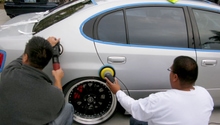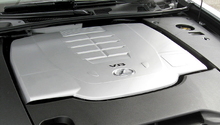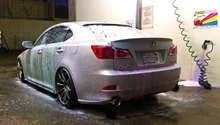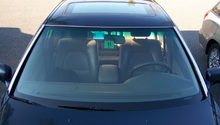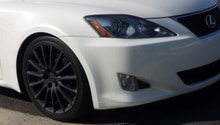Lexus: How to Clean Your Wheels
Gritty, dirty wheels are an eyesore. Learn how to clean your rims the correct way below.
This article applies to the Lexus IS, GS, ES, and RX (2004-2014).
Cleaning wheels and rims is one of the least-fun chores of detailing a Lexus. They collect brake dust and road grime, and may require use of specialized cleaners to avoid damaging their finish. The fancier a wheel is, the easier it is for dust and grime to get stuck in hard-to-reach places. Here are some ways to make this task easier and more productive.

Materials Needed
- Assortment of bristle brushes for wheels/tires
- Sponges and applicator pads
- Garden hose and spray nozzle
- Buckets
- Leaf blower
- Wheel cleaner appropriate for material/finish
- Tire cleaner and dressing
- Soap
- Gloves
Step 1 - Find out which cleaners to use
The owner's manual should give guidance on which cleaners to use with stock wheels, whether they are clear-coated, painted, plated or polished, rough or smooth. Aftermarket wheel owners will have to check with the manufacturer for recommended cleaners. Tire cleaners and dressings should be non-caustic and non-acidic so that they don't break down rubber over time.
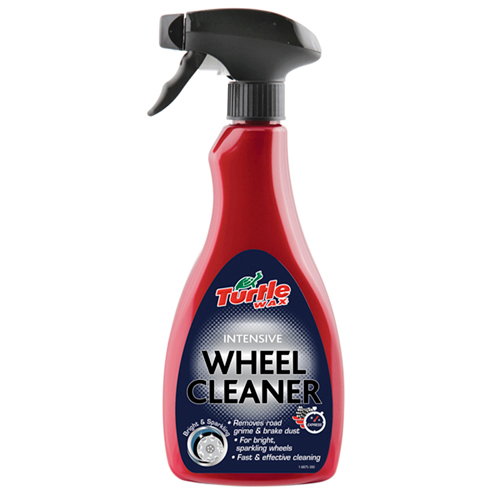
Pro Tip
Some cleaners contain mildly caustic chemicals to help cut through the gunk. Have a set of chemical-resistant gloves like those used for dish washing handy.
Step 2 - Read the instructions
This step seems obvious enough, but many times people just dive in and start applying product. This step goes double if the cleaner being used is unfamiliar. Take a few seconds to read the directions for best results.
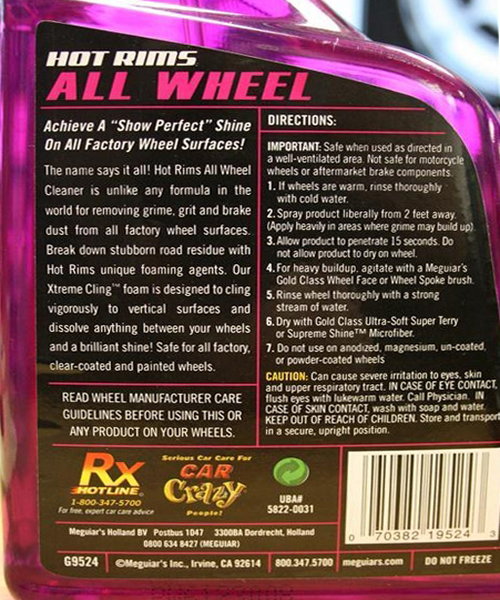
Step 3 - Round up tools, supplies and water
Get everything you need in one place before you start. Fill two buckets with clean water—one to rinse out rags/sponges and another for rinsing the wheel.

Pro Tip
Be environmentally responsible; even if your locale doesn't restrict water usage for washing your car, try to use as little water as possible. Consider filling a squeeze bottle or a pump-up sprayer with water instead of letting it run out the hose.
Step 4 - Pre-soak/clean to soften build-up
Apply cleaner to the wheel and let it do its thing. Many require a few minutes to break down and soften the grime. The instructions on the bottle will be more specific about the time frame.
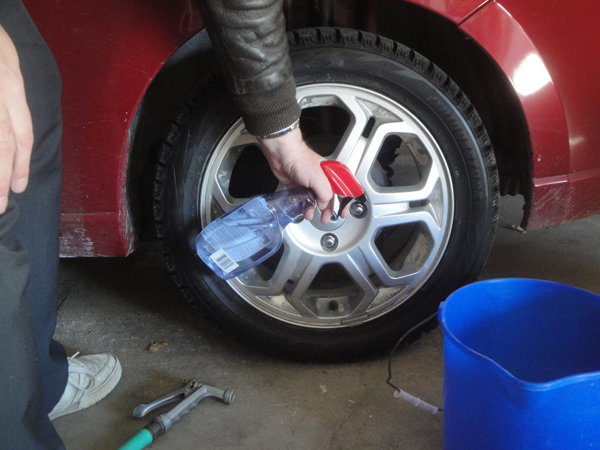
Step 5 - Scrub wheel/tire and apply more cleaner
After the cleaner has had some time to break down grime, scrub the wheel with a brush to loosen the dirt. If it's still hard to get loose, apply more cleaner and let it sit for another few minutes.

Pro Tip
Have a variety of brushes handy to get in between the wheel spokes and into cavities or dished areas. Tapered or bottle brushes are good for between wheel spokes, and old tooth brushes can get into the recessed areas of center caps. Brushes with long handles can help save your back, too.
Step 6 - Rinse off wheel/tire
Wet down the wheel and tire and wipe off with a sponge. Rinse it out in the dedicated "rinse" bucket. Once the wheel has been cleaned off, use a clean sponge in a clean bucket of water for the final rinse.
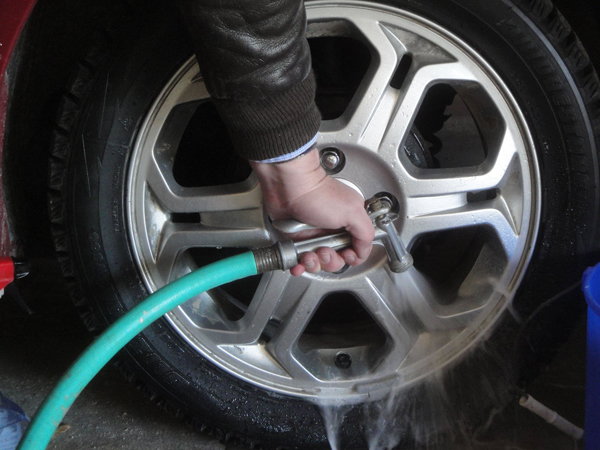
Step 7 - Dry off the wheel
Wipe down the wheel with a soft cloth like a microfiber towel and look for the last traces of grime to remove. Don't use this cloth/towel for anything but wheels and tires.
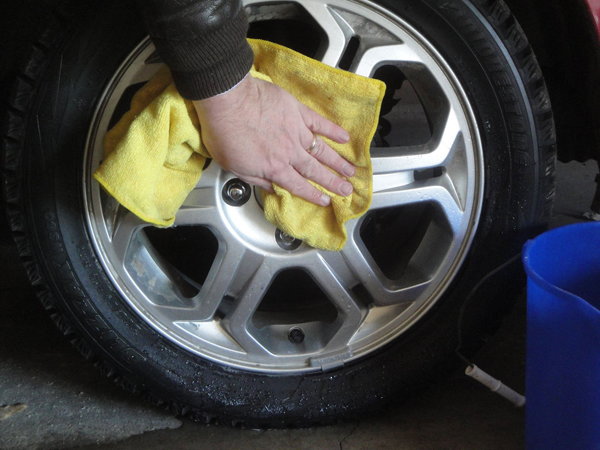
Pro Tip
Use forced air to dry off the wheels. A cheap electric or battery-powered leaf blower will help speed up this step and help reduce water-spotting.
Step 8 - Polish wheel and apply tire dressing
Applying wax, polish, or a clear coat will preserve the wheels' finish and make them really shine. Some additional cleaning using a variety of methods appropriate for the wheel's finish may be needed to remove corrosion and stains before waxing. Tires should be treated with a dressing or gel to help prevent degradation from ultraviolet (UV) light exposure and restore their finish.
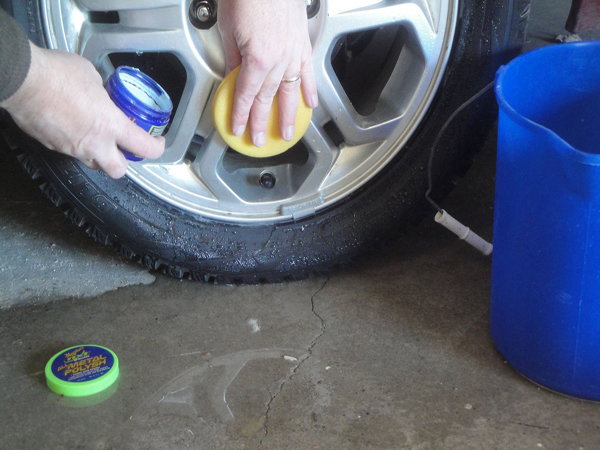
Pro Tip
To help keep wheels clean in between car washes, and if you do a lot of braking with a resultant buildup of brake dust, keep a spray bottle filled with a diluted solution of your cleaner and water in the garage. Hit the wheels once a week to keep down build-up.
Featured Video: How to Clean Lexus Wheels
Related Sites
- How to Detail Wheels & Tires - Autogeek.net
- Best Wheel Cleaners - Consumerreports.org
- How to Clean Alloy Wheels - Wikihow.com
- Tire Cleaner Products- Acehardware.com

